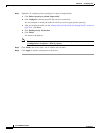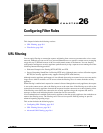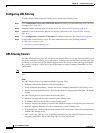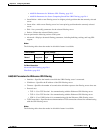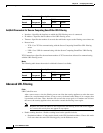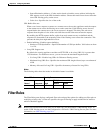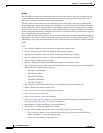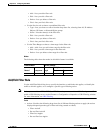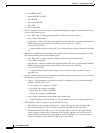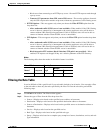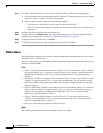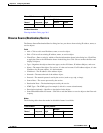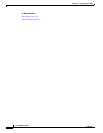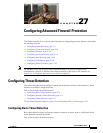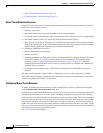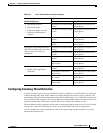
26-8
Cisco ASDM User Guide
OL-16647-01
Chapter 26 Configuring Filter Rules
Filter Rules
–
Filter HTTP (URL)
–
Do not filter HTTP (URL)
–
Filter HTTPS
–
Do not filter HTTPS
–
Filter FTP
–
Do not filter FTP
• Source—Enter the source of the traffic to which the filtering action applies. You can enter the source
in one of the following ways:
–
any—Enter “any” (without quotation marks) to indicate any source address.
–
name—Enter a hostname.
–
address/mask—Enter an IP address and optional network mask. You can express the netmask in
CIDR or dotted decimal notation. For example, you can enter 10.1.1.0/24 or
10.1.1.0/255.255.255.0.
–
...—Opens the Browse Source dialog box. You can choose a host or address from the drop-down
list.
• Destination—Identifies the destination of the traffic to which the filtering action applies. You can
enter the destination in one of the following ways:
–
any—Enter “any” (without quotation marks) to indicate any destination address.
–
name—Enter a hostname.
–
address/mask—Enter an IP address and optional network mask. You can express the netmask in
CIDR or dotted decimal notation. For example, you can enter 10.1.1.0/24 or
10.1.1.0/255.255.255.0.
–
...—Opens the Browse Destination dialog box. You can choose a host or address from the
drop-down list.
• Service —Identifies the service of the traffic to which the filtering action applies. You can enter the
destination in one of the following ways:
–
tcp/port—The port number can be from 1 to 65535. Additionally, you can use the following
modifiers with the TCP service:
!=—Not equal to. For example, !=tcp/443
<—Less than. For example, <tcp/2000.
>—Great than. For example, >tcp/2000.
- —Range. For example, tcp/2000-3000.
–
name—Enter a well-known service name, such as http or ftp.
–
...—Opens the Browse Service dialog box. You can choose a service from the drop-down list.
• HTTP Options—This area appears only for HTTP filter rules.
–
When URL exceeds maximum permitted size—Choose the action to take when the URL
exceeds the specified size. You can choose to truncate the URL or block the traffic.
–
Allow outbound traffic if URL server is not available—When enabled, if the URL filtering
server is down or connectivity is interrupted to the security appliance, users will be able to
connect without URL filtering being performed. If this is disabled, users will not be able to
connect to Internet websites when the URL server is unavailable.



